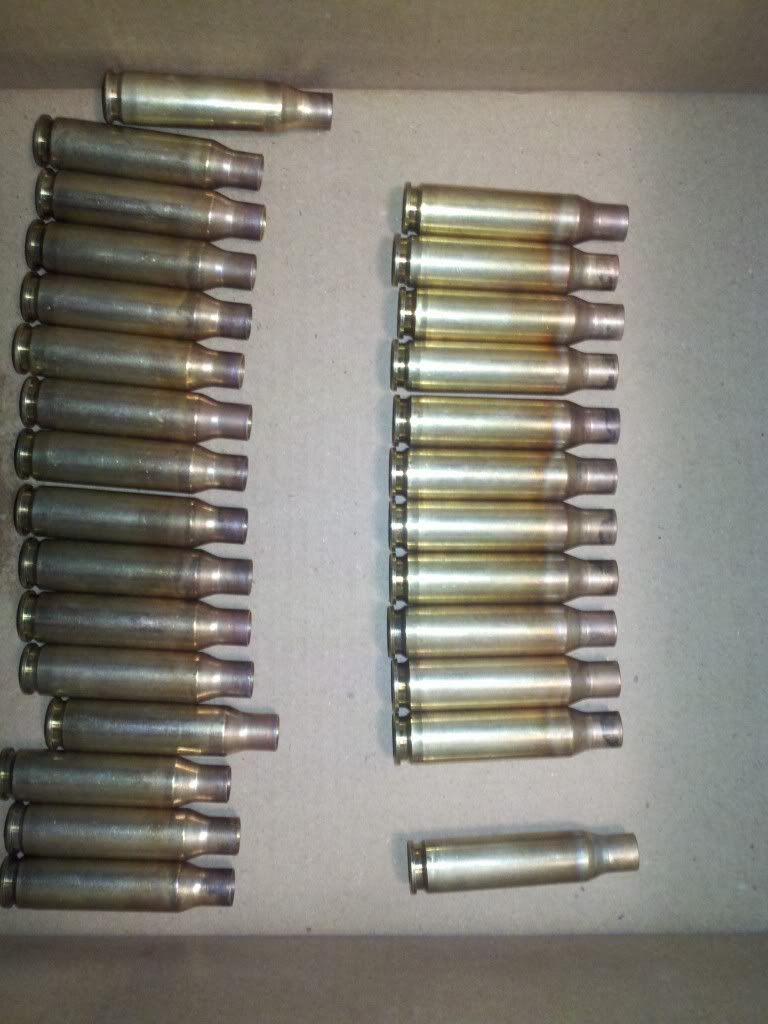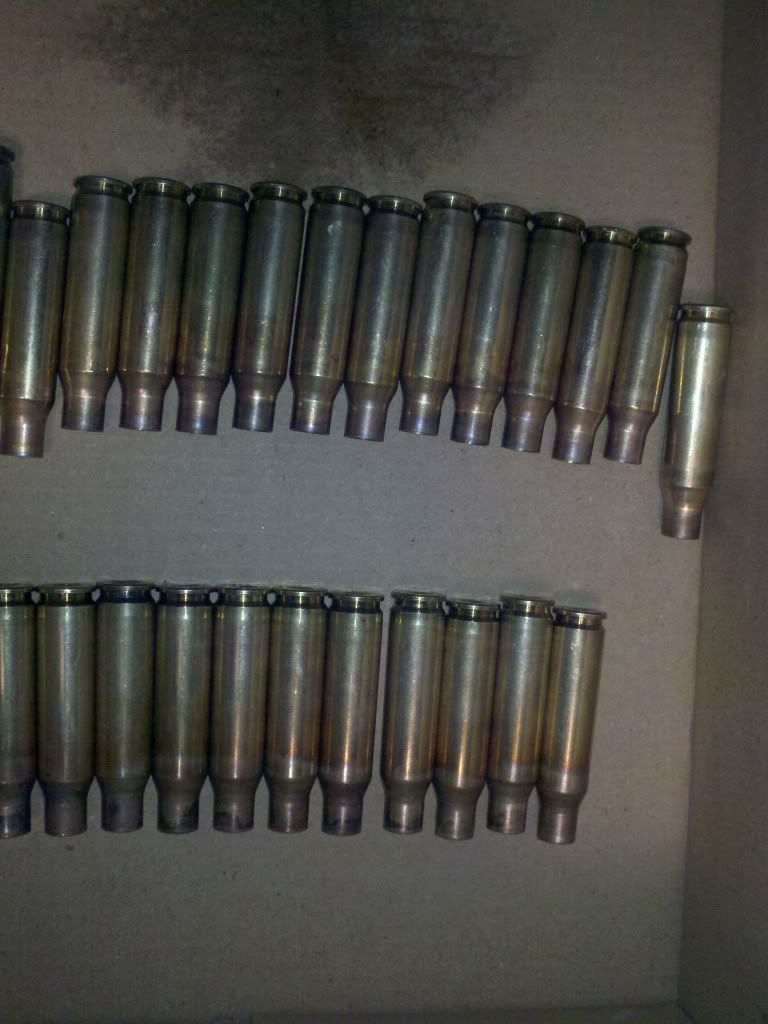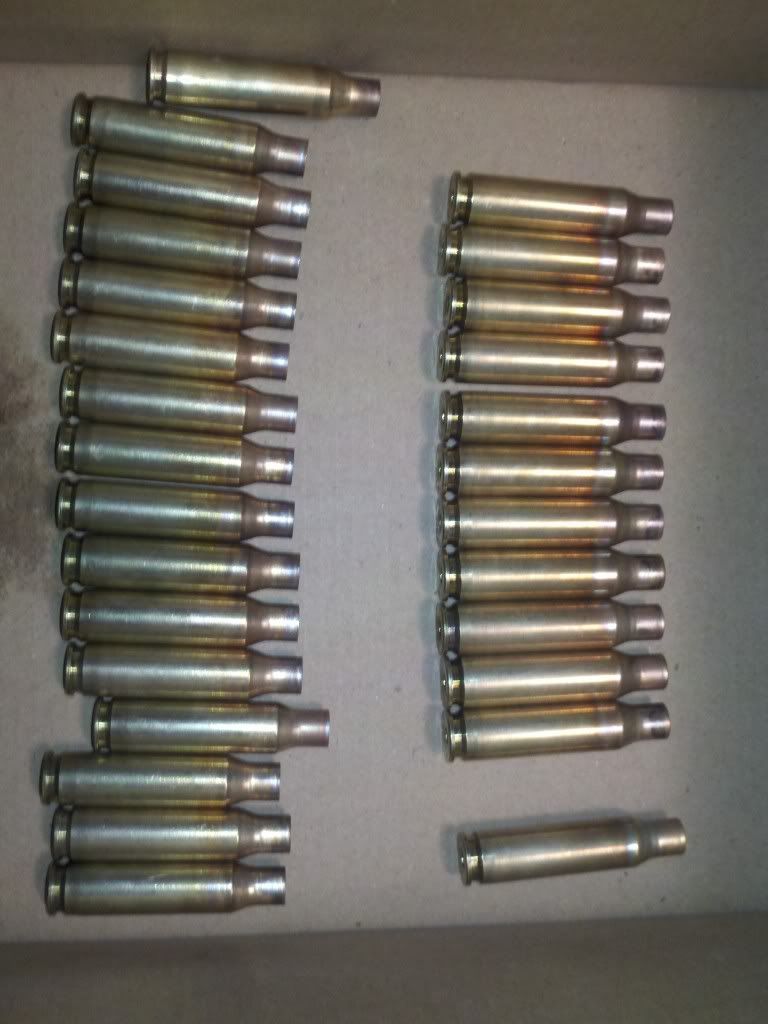Re: Annealing brass pics
The problem with using temiplac is that the heat from the raw flame of the torch WILL influence your percieved results. The theory of using the tempilac, or a temp stick, is that it will indicate the temp of the brass. Well, if the tempilac itself is rotating through a wash of heat that is MUCH hotter than the brass itself, it's going to indicate "temp" much sooner than the brass itself getting to that temp.
Savvy?
Some try to circumvent this by trying to fool physics with placing the temilac inside the neck....this might help some, but the raw heat still curls around and flows into the case mouth, still yielding skewed feedback.
And then you have to clean that garbage off of your brass when you are done....fuck that.
Tempilac, or a temp stick, is NOT meant for direct heat from the heat source. When I was doing boiler code work and fooling with all kinds of high chromium alloy, we had to preheat the material before welding it, and in some cases post heat it after welding it. If the great all powerful QC gods had caught us applying direct heat to our temp indicator they would have fired us on the spot.
No....you heat, pull the flame back, then strike the temp indicator on the hot metal; if it doesn't melt you need more heat, until a quick strike of the temp indicator just melts without a spattering boil and smoke. The ONLY way we got away with applying the temp indicator before heating was on the back side of a piece completely sheilded from the direct heat of the torch. This was how we knew our heat was completely soaking through a heavy piece of work.
Doing this properly on every piece of brass in a run of annealing is just not practical. The only reason people get away with doing it improperly is because the window of temperatures to anneal cartridge brass is wide enough to allow it. So, if you apply a little common sense to the equation, then it's easy to see that temilac is just a feel good that really serves no legitimate purpose.
It's not that hard to just cut the damn lights off, and with a sharp eye watch the brass turn from bright shiney gold color to the very first indication of a very dull vague red, which is the first color change you will see.....bang it's done, quench it.
It's just that fucking simple..........







